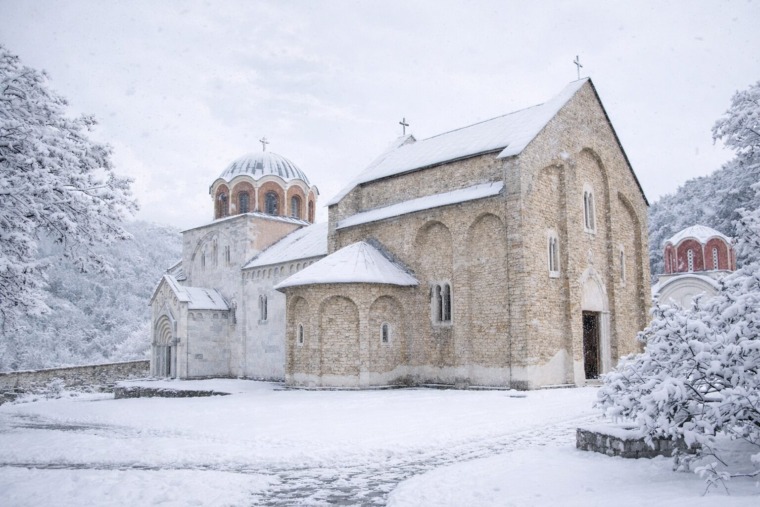

An imagined journey through Organic Serbia starts in Vojvodina. The gifts of nature predestined this region for agriculture, and therefore it is no wonder that organic farming in Serbia started in Vojvodina. This region, and more precisely, Subotica was the birthplace for spreading the ideas of organic farming. This town in the northernmost part of Bačka was the first in the country to have products stamped with the organic official logo and the first internationally awarded bio-farm.
GRAINS AND VEGETABLE GARDENS OF PANNONIA
The salaš (Serbian for family farm, ranch) of the Mamuzić family is located in the village of Ljutovo, in the vicinity of Subotica. On the light, sandy soil these dedicated people grow cereals, various vegetables and chilli peppers. The Mamuzić salaš specialty are watermill organic stone-ground grains. In the village of Orom, in the municipality of Kanjiža, yet another gem in organic produce is on offer from the north of Serbia – Jonoš Faraga’s farm where herbs and aromatic plants are grown. Along the visit to the organic producers in the surroundings of Subotica, the tourist road posts take us to the visit to the “plain’s windy lakes” – Palić and Ludaš and the ranches and riverside inns (Serbian čarda) that on their tables serve traditional meals, autochthonous “wines from the sand” and domestic fruit brandies.

LAND OF DARK COMPLEXION AND RED PEPPERS
Travelling across Organic Serbia leads us to Sombor, the centre of Western Bačka region. Due to its position in the landscape and being as “flat as a pancake”, Sombor is called also Ravangrad – the ‘Flat City’. However, at the eastern borders of the town, the plain withdraws and is confronted with the rolling hills of the Telečka highlands. In the old days tobacco was grown on these hillocks, and today the area is famous above all for its production of chilli peppers. The highlands with the village of the same name, Telečka, is the place where one of best chilli peppers to be found in Europe are grown. The village has a long tradition of growing this culture – a mill for processing peppers has been in place since 1939, and it is interesting that in this village there is an unusual and valuable Museum of tobacco and blacksmith’s trade. The list of recommendations for exploring the tourist attractions of the region includes Sombor – the greenest city in Vojvodina, the Sombor ranches, gastronomic specialties and expanses of a special nature reserve the Upper Danube.
NOVI SAD’S ORGANIC GREEN MARKET AND SALADS IN DIFFERENT COLOURS
As a leader in agriculture and a centre for promoting new ideas, the capital of Vojvodina is the first town in Serbia where a special greenmarket for organic produce, “My Salaš”, was opened, and also the country’s first specialised organic food shop. The village of Kisač is marked on the map of organic producers of Novi Sad, where the Vozar family lives and produces various types of organic vegetables. The Vozar family is known above all by their great selection of lettuces – they grow the usual green ones, but also specific ones, brown, red and purple coloured, which are very nutritious. The range of their products includes radicchio, broccoli, zucchini, spinach…

In Serbia today, organic agriculture mostly relies upon small farmers. It is still a rare thing to see larger agro-companies joining the “Green Revolution”. That is why an example of a large agro-system accepting green agriculture as their general model is a significant one. Under the motto “a thousand cows on a thousand hectares” Global Seed from Čurug completes a full circle – they grow the crops needed for feeding the cows themselves, they have built a plant for organic feed, and the final objective is to open an organic dairy, a unique one in Serbia. Aside from visiting organic producers, the tourist outreach from the main topic would be some of the major attractions of Novi Sad and its surroundings: a lively urban centre with its impressive Petrovaradin fortress on the banks of the Danube and close by is Sremski Karlovci famed for its architecture, the National Park of Fruska Gora also close by, offers an escape from city life with its many baroque Orthodox monasteries, and in the vicinity of Čurug the Nature Park – Stara Tisa and Pearl Island.
Text: Milena Mihaljčić
Photo: Dragan Vildović
Related Articles


From Fireworks to Family Dinners: New Year’s Eve Across Serbia
December 31, 2025
Kuršumlijska Banja: Serbia’s Quiet Winter Spa Escape
December 30, 2025
Novak Đokovic Receives Special Globe Soccer Award in Dubai
December 29, 2025





